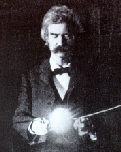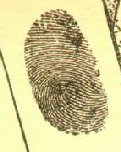

|
MT had hoped to bring out Pudd'nhead Wilson with his own publishing company, but by the time the new novel was ready Webster & Company had gone into bankruptcy. (Its last title was Tom Sawyer Abroad, which was copyrighted on the same day, 18 April 1894, that the publishing company officially failed.) Shortly after that MT arranged with Frank Bliss, Elisha's son, to publish Pudd'nhead with the American Publishing Company, the old subscription firm he had left twelve years earlier. Living in Europe and distracted with his financial problems, MT may have had little to do with the actual production of the novel. The Century used one of its staff artists, Louis Loeb, to illustrate the story for magazine publication; Chatto & Windus used Loeb's drawings when they published the novel (without "Those Extraordinary Twins") in England. The Century also used a photograph of MT to accompany the first installment (in December, 1893) that both the American and English first editions also used. The American Publishing Company supplied the copious pictures subscription buyers expected with a technique that had never before been used for a MT text: "marginal illustrations." As done by two artists named F.M. Senior and C.H. Warren, this mode of illustration has a couple very decided consequences. It shrinks all the characters to cartoon-size, keeping their antics and anguishes at a great distance from the reader's sympathy. And although the text treats racial identity as a deep ambiguity, this mode of illustration, because it makes shading impossible, forces the illustrator to depict a character as either as white as the page or as black as the ink. In a brief review, The New York Times praised these illustrations, but how MT felt about them and the decided effect they must have had on contemporary readers' reaction to the novel is unknown to me. Five years later, E.W. Kemble did a set of illustrations that were used in two new editions. The American Publishing Company brought out Pudd'nhead Wilson and Those Extraordinary Twins as Vol. 14 of its upscale "Édition de Luxe" of The Writings of Mark Twain, which was limited to 1000 numbered copies; this included six drawings by Kemble. Harper & Brothers, which bought most of MT's copyrights after his bankruptcy, used two of these drawings in its "Harper's Library Edition," also published in 1899. As Werner Sollors has recently pointed out, how readers in 1899 "saw" Roxy might have depended on which of these editions they owned. Both include "Roxy Harvesting Among [the] Kitchens," in which the most visible woman, and the one who, because she is holding a basket, seems to be "harvesting" food, looks like the "Aunt Jemima" stereotype rather than the "majestic" character whom MT's text says is "as white as anybody." Purchasers of the "Édition de Luxe," however, would have seen the second, later drawing called "Roxy Among the Field Hands," in which she appears, if not "white," at least mulatto -- and so those readers may have gone back to the earlier illustration and found Roxy where Kemble has almost hidden her, behind the right shoulder of the black man in "Harvesting Among the Kitchens." How many readers of the mass market Harper's edition even noticed this strangely disembodied figure lurking in the background is not clear, but given white America's preconceptions about both female slaves and Kemble's typical representations of "negroes" (see his drawings for the first edition of Huck Finn), it would probably have been easier for them to overlook the discrepancies between MT's description of Roxy and Kemble's woman with the basket than to find and identify the other woman in that picture. While "Among the Field Hands" seems never to have been republished, various publishers used "Roxy Harvesting" as the frontispiece for Pudd'nhead Wilson in hundreds of thousands of copies sold between 1899 and World World II. I have not found any evidence that anyone during all that time raised any questions about it as a representation of Roxy -- in which case it could serve as visual proof of the point that MT makes so often in his writing, about how easy it is for people who have been culturally conditioned, or "trained," to see what isn't there. Viewable below are Loeb's six drawings, 12 sample pages from the first American edition, and the illustrations from the two 1899 editions. The archive also contains a facsimile first edition, where you can see all the "marginal illustrations." |
The Century Magazine Illustrations (1894) |
|
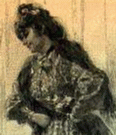 |
|
The "Marginal Illustrations" (1894) |
|
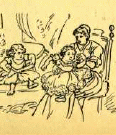 |
|
The Harper & Brothers Illustrations (1899) |
|
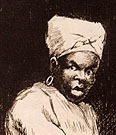 |
|
Édition de Luxe Illustrations (1899) |
|
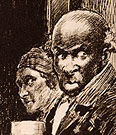 |
|
